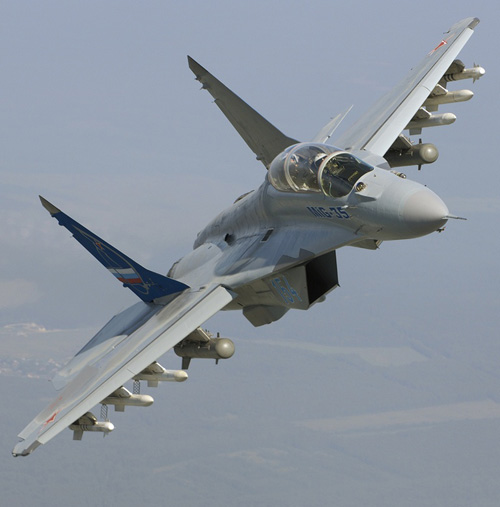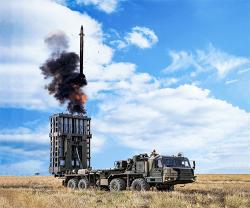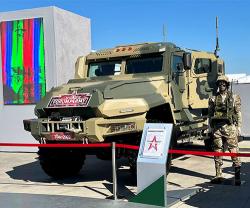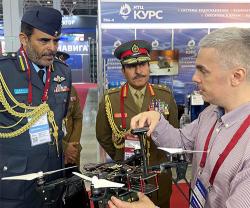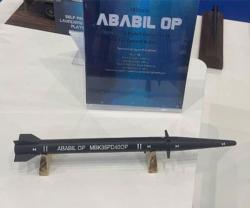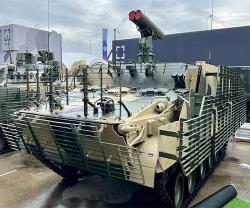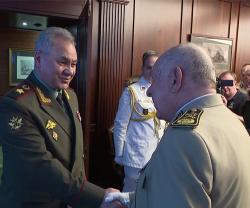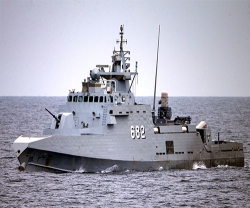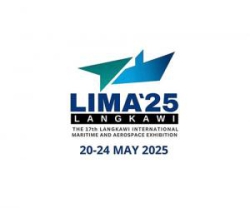Head of the MiG aircraft corporation said that the Russian Aerospace Forces will be equipped with advanced MiG-35 multirole fighters next year. “We are starting a big testing program, and I plan that a year from now this aircraft will enter into direct service with the Russian Aerospace Forces,” MiG Director General Ilya Tarasenko told reporters.
Meanwhile, Aerospace Defense Forces Commander Viktor Bondarev confirmed that Russia’s MiG-35 strike fighter would eventually be armed with laser weaponry. He said the development of laser weapons for the MiG-35 would begin immediately following flight testing is completed this summer.
United Aircraft Corporation (UAC) President Yury Slusar confirmed that the Russian military will begin purchasing the new 4++ generation multirole aircraft on a large-scale basis starting in 2019. Attending a demonstration flight of the fighter during a meeting of the Military-Industrial Commission last week, President Vladimir Putin clarified that upon the successful completion of state trials, the Aerospace Defense Forces will order their first batch of 30 MiG-35s, and will purchase 140 more in the coming years in order to completely upgrade Russia's fleet of light frontline aviation aircraft.
A presentation of the MiG-35 for possible foreign buyers was held Friday. Russian Federal Service for Military-Technical Cooperation Deputy Director Anatoli Punchuk said that he thinks the new planes could find strong demand among the air forces of Eastern European countries which have experience flying Soviet and Russian planes. Bulgaria, Slovakia and Poland, which operate MiG-29s, could be particularly interested in the new jets, he said.
The MiG-35 (NATO reporting name Fulcrum-F) multirole fighter is an in-depth modernization of the MiG-29M/M2 and MiG-29K/KUB fighter jets, and features improved flight characteristics, as well as improved combat capabilities. The aircraft is designed primarily for operations in the ground-based theater of operations.
Military expert Colonel Makar Aksenenko explained that the plane is a critical and long-awaited component in Russia’s post-Soviet military strategy.
“In my view, this was a machine that we needed a long time ago. In the 1990s and early 2000s, Russia rather carelessly reduced its fleet of fighter-bombers, shifting the tasks it was meant to perform to ground attack aircraft and bombers,” he noted.
However, “now, our air force has again come to understand that it needs a machine capable of providing air cover to troops on the battlefield, but also of acting in operational and tactical depth, striking enemy communications, command posts and reserves. In other words, they need a machine capable of solving multiple tasks in the airspace above the modern battlefield.”
Asked to comment on the MiG-35’s predecessor, the MiG-29, and why the latter plane was chosen as the basis for the creation of the new 4++ generation aircraft, the officer explained that “this was the fastest and least expensive way to deliver a new aircraft to army aviation – one which relies on the groundwork laid by the MiG-29 family of aircraft, which have excellent aerodynamic characteristics and a solid resource for future modernization.”
“This is the same route taken by other aviation powers, Aksenenko noted, pointing to the US F-15 and F-16 fighters, “which are upgraded to have improved combat characteristics, and to carry a more extended range of weapons based on contemporary, high-precision systems.”
A number of experts earlier said that one of the potential weak spots of the MiG-35 were problems with its Zhuk (“Beetle”) onboard active phased array antenna radar system. Asked to comment on these problems, Aksenenko noted that the Zhuk radar, capable of targeting both air and ground targets, is “in many respects a revolutionary system for the Russian defense industry and our aviation.”
Aksenenko emphasized that “the MiG-35 is the winning and economical option. It is the optimal solution to the task at hand at the lowest possible price.”

